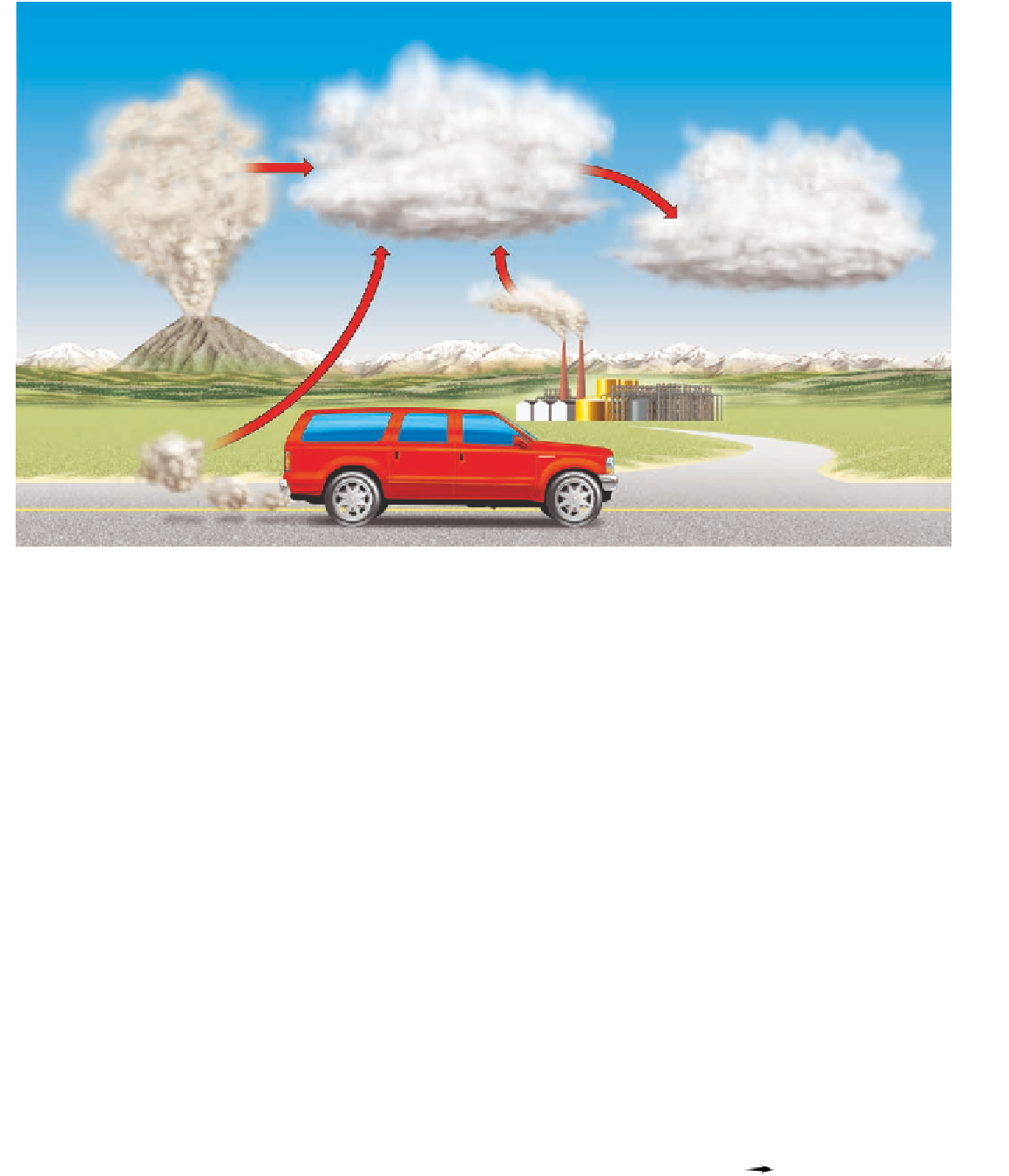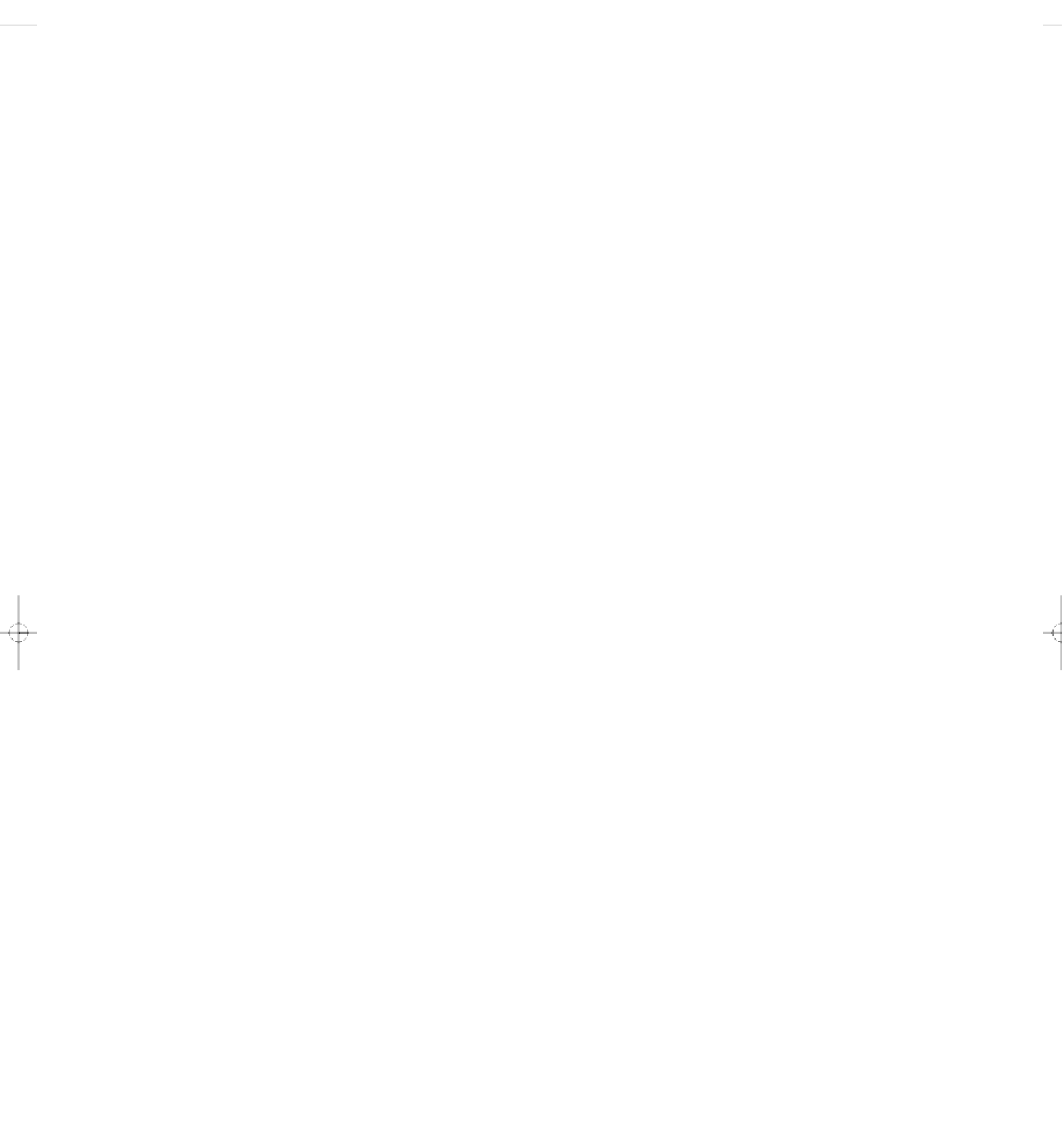Environmental Engineering Reference
In-Depth Information
Primary Pollutants
Secondary Pollutants
CO
CO
2
SO
2
NO
NO
2
SO
3
Most hydrocarbons
Most suspended particles
HNO
3
H
3
SO
4
H
2
O
2
Most NO
3
-
and SO
4
2-
salts
O
3
PANs
Sources
Natural
Stationary
Mobile
Figure 15-3
Natural capital degradation:
sources and types of air pollutants. Human inputs of air pollutants
may come from
mobile sources
(such as cars) and
stationary sources
(such as industrial and power plants).
Some
primary air pollutants
may react with one another or with other chemicals in the air to form
secondary air
pollutants.
In the United States and most other developed
countries, government-mandated standards set maxi-
mum allowable atmospheric concentrations, or criteria,
for six
criteria or conventional air pollutants
commonly
found in outdoor air. Table 15-1 lists the properties,
sources, and effects of these six types of pollutants.
Study this table carefully.
Most scientists would add two other chemicals to
the six criteria pollutants shown in Table 15-1.
Volatile
organic compounds (VOCs),
mostly hydrocarbons, play
a role in the formation of the photochemical smog that
plagues many cities.
Carbon dioxide (CO
2
)
has the abil-
ity to increase the temperature of the troposphere and
thus change climate, as discussed in Chapter 16.
Many oil and coal companies do not want carbon
dioxide classified as a pollutant and have lobbied U.S.
elected officials successfully to prevent such classifica-
tion. Otherwise, we might use less of these fuels and the
companies would have to spend more money control-
ling CO
2
emissions. Twelve U.S. states have sued the
EPA for failure to regulate CO
2
emissions. Some states
are also passing their own laws that regulate CO
2
emis-
sions.
Critical thinking: do you believe that carbon dioxide
should be classified as a pollutant?
15-3 PHOTOCHEMICAL AND
INDUSTRIAL SMOG
Science: Photochemical Smog
Photochemical smog is a mixture of air pollutants
formed by the reaction of nitrogen oxides and
volatile organic hydrocarbons under the influence of
sunlight.
A
photochemical reaction
is any chemical reaction acti-
vated by light. Air pollution known as
photochemical
smog
forms when a mix of nitrogen oxides (NO and
NO
2
, collectively called NO
x
) and volatile organic
hydrocarbon compounds from natural and human
sources react under the influence of UV radiation from
the sun to produce a mixture of more than 100 pri-
mary and secondary pollutants. In greatly simplified
terms,
ground level ozone (O
3
)
other photochemical
oxidants
VOCs NO
x
heat sunlight
aldehydes
other secondary air
pollutants


